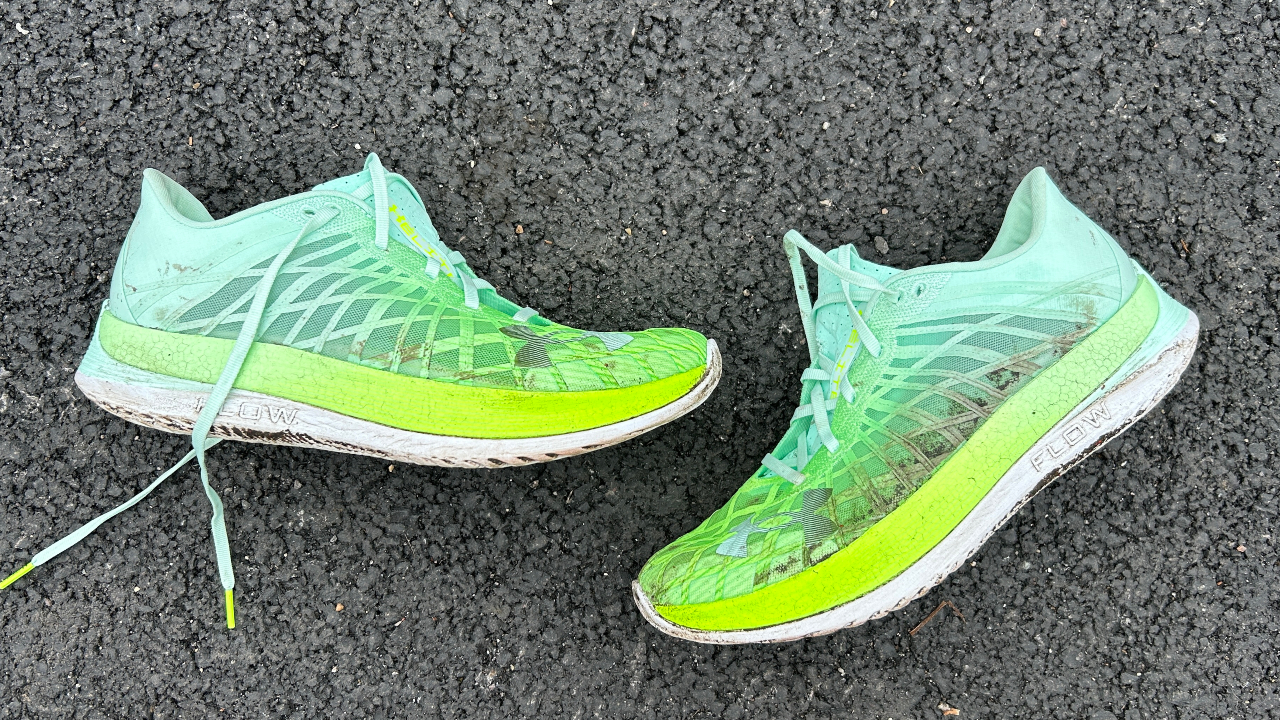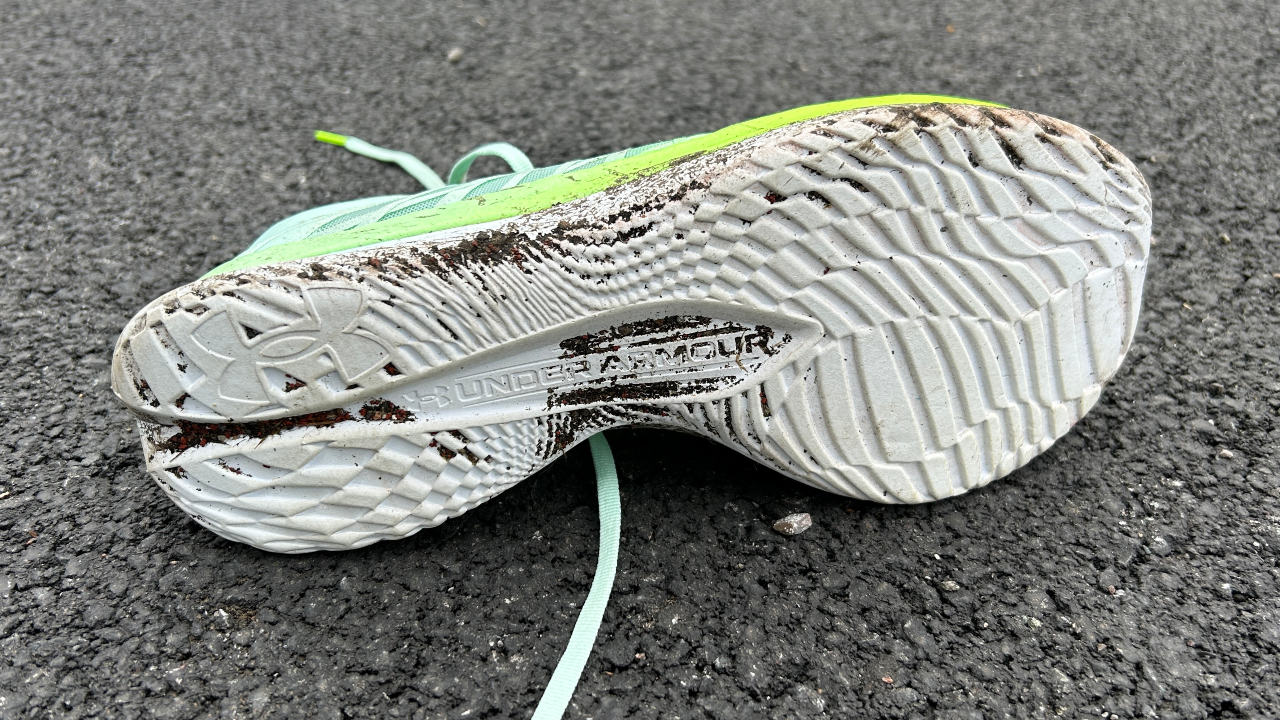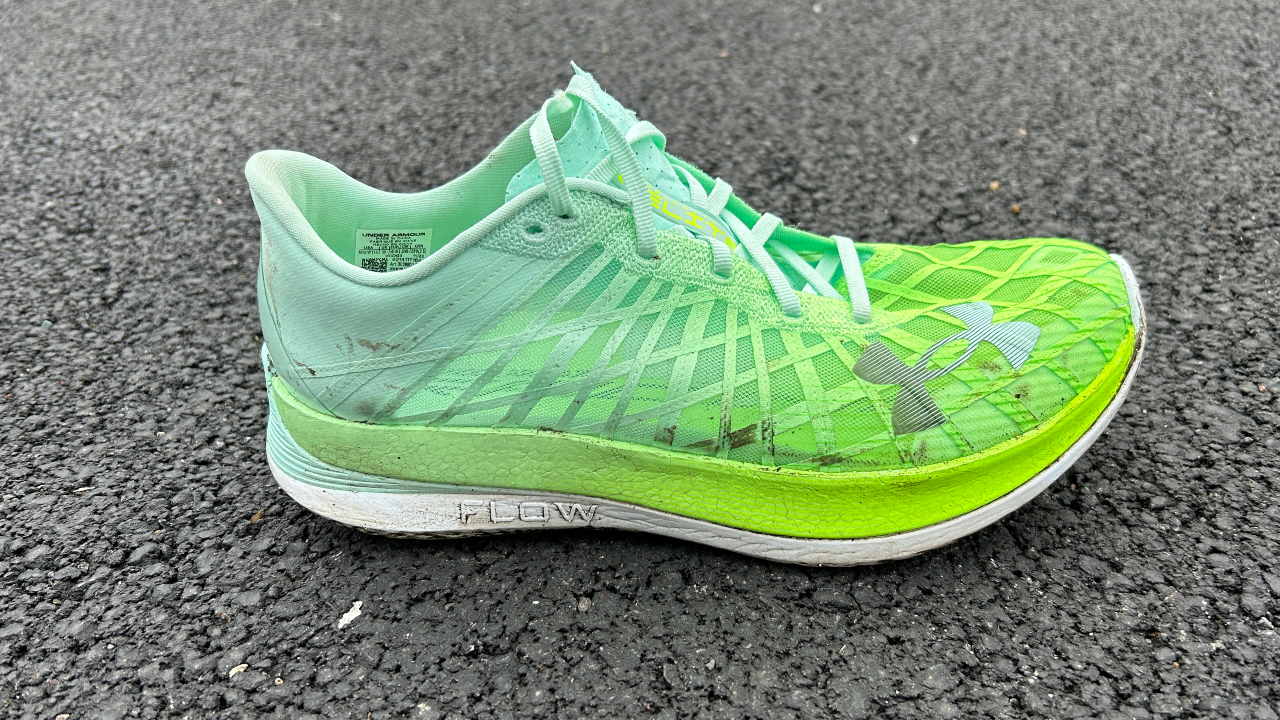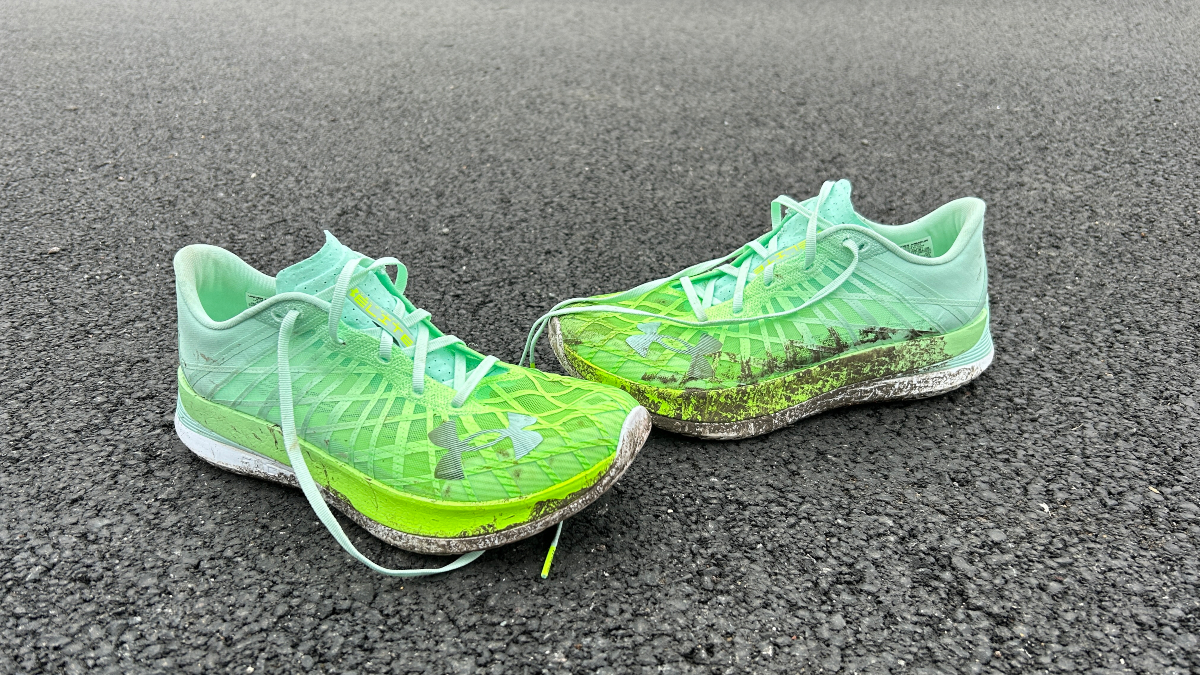Our Verdict
The Under Armour Flow Velociti Elite has all the ingredients of the best carbon plate running shoes, and is a high-performance option for fast running, but it lacks the propulsive feel of the top racers that are available.
For
- Fast ride
- More stable than other super-shoes
Against
- Lacks propulsive feel of others
- A bit firm for longer runs
- Heavier than others
You can trust Coach
It’s not easy to make one of the best carbon plate running shoes. Almost every brand now has a super-shoe in its line-up, but creating the magical feel of top racers like the Nike Vaporly isn’t as simple as sticking a carbon plate between two layers of bouncy foam.
The Under Armour Flow Velociti Elite illustrates how tricky it is for a brand to nail its first super-shoe. The main elements of a modern-day racer are there, but the performance isn’t as good as the best options available, making it hard to recommend the Velociti Elite.
Under Armour Flow Velociti Elite Review: Price And Availability
The Under Armour Flow Velociti Elite launches on the UA website on Friday 7th April and costs $250 in the US and £220 in the UK. That price is comparable to that of other super-shoes, though you can now find older options, like the Nike Vaporfly NEXT% 2, in sales for less than £200.
Design And Fit
The Flow Velociti Elite introduces two new foams to Under Armour’s range. The first is a springy PEBAX material that’s used for the top half of the midsole, and the second is a gas-injected version of the Flow foam used in the Velociti Wind training shoe, which is lighter and bouncier than the normal Flow foam.
There is also a TPE insole to add more cushioning underfoot, while a full-length carbon plate runs through the midsole. The Flow foam also acts as the outsole of the shoe, with no rubber added. The foam has shown no signs of wear in my testing so far and the pattern on the bottom means that the shoe grips well, so I don’t expect this rubberless design to compromise durability or traction significantly. The stack height is listed at 39mm at the heel and 31mm at the forefoot for an 8mm drop.

Weighing 8.5oz/242g in my UK size 9, the Flow Velociti Elite is one of the heavier super-shoes: it’s comparable in weight to marathon cruisers like the Nike Alphafly NEXT% 2 and Adidas Adios Pro 3, which are more cushioned. The Nike Vaporfly NEXT% 2, Asics Metaspeed Sky+, New Balance Fuelcell SC Elite v3, Mizuno Wave Rebellion Pro and Saucony Endorphin Elite are all 10-30g lighter in my size.
The Warp 2.0 mesh upper has supportive strips running through it in a criss-cross pattern that ensures a secure fit down the length of the shoe, with padding around the heel that helps to cradle the Achilles. The shoe fitted well in my normal size. I also tried a half size down and found it too tight in the toe box.
How I Tested This Shoe
I have run 50km in the Under Armour Flow Velociti Elite, using it for a range of runs. These have included easy plods, a track session with short all-out reps and a longer session with extended stints at around my marathon pace. I have also tested almost all the best carbon plate running shoes available from other brands.
Running Performance
I began testing the Flow Velociti Elite at a launch event with Under Armour in Portugal, where most of the running I did was pretty relaxed, even including a long stint jogging along soft sand on the beach. This is not the kind of running I’d generally do in a carbon shoe, but the Velociti Elite surprised me by being comfortable and stable for easy runs, which is not true of most carbon shoes that have high stacks of foam in the midsole.

Score one for versatility then, because any time I wasn’t on the beach the Velociti Elite was enjoyable to use for easy runs (no shoe is enjoyable when running in sand).
However, fast running is what the shoe is built for and the price demands it excels at it. My first fast run in the shoe was a track pyramid session running 200m, 400m, 800m, 400m, 200m. Aside from the first rep I pushed all out and although the Velociti Elite is a big and heavy shoe for this kind of pace, it felt more grounded and stable than other super-shoes when attacking the bends.
Under Armour suggests the Velociti Elite is built more for marathon distances, though, so in my next session I did stints at that kind of pace, running a short fartlek session before doing two miles at 3mins 30secs/km pace.
The shoe’s performance was fine, but lacked the springy feel of the best carbon shoes I’ve tested, and it’s firmer than most others too. This increases stability and helps with its versatility, but detracts from its comfort on longer, hard runs.
To me the Velociti Elite feels more akin to fast plated training shoes like the Asics Magic Speed 2 or Saucony Endorphin Speed 3 than to top racers, in terms of weight and the more grounded ride.
Is The Under Armour Flow Velociti Elite Worth It?

The Flow Velociti Wind is a good shoe, but it doesn’t deliver the propulsive performance of the best carbon plate running shoes. Under Armour evidently has the tech in place to make a great shoe, but that might arrive one or two generations down the line, and the Velociti Elite is more of a trainer/racer for me.
It’s a good all-rounder but its price is too high to fill just that role, especially when better, more versatile shoes like the Saucony Endorphin Speed 3 are available for significantly less.
If you are looking for a top-notch carbon racer, the Nike Vaporfly is always a strong option. The Vaporfly 3 has launched—though isn’t widely available—so now may be a great time to bag a deal on the Nike Vaporfly NEXT% 2, since it’s in sales for less than its $250/£225 RRP.
Those looking for a marathon racing shoe in particular will be well served by the Nike Alphafly NEXT% 2, or Mizuno Wave Rebellion Pro. The former is comfortable and supremely bouncy, while the latter is fast without feeling harsh underfoot.

Nick Harris-Fry is a journalist who has been covering health and fitness since 2015. Nick is an avid runner, covering 70-110km a week, which gives him ample opportunity to test a wide range of running shoes and running gear. He is also the chief tester for fitness trackers and running watches, treadmills and exercise bikes, and workout headphones.

